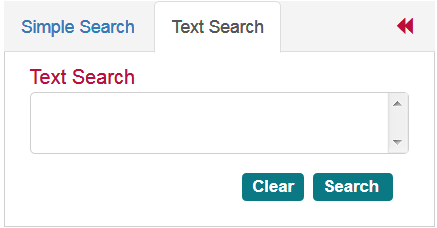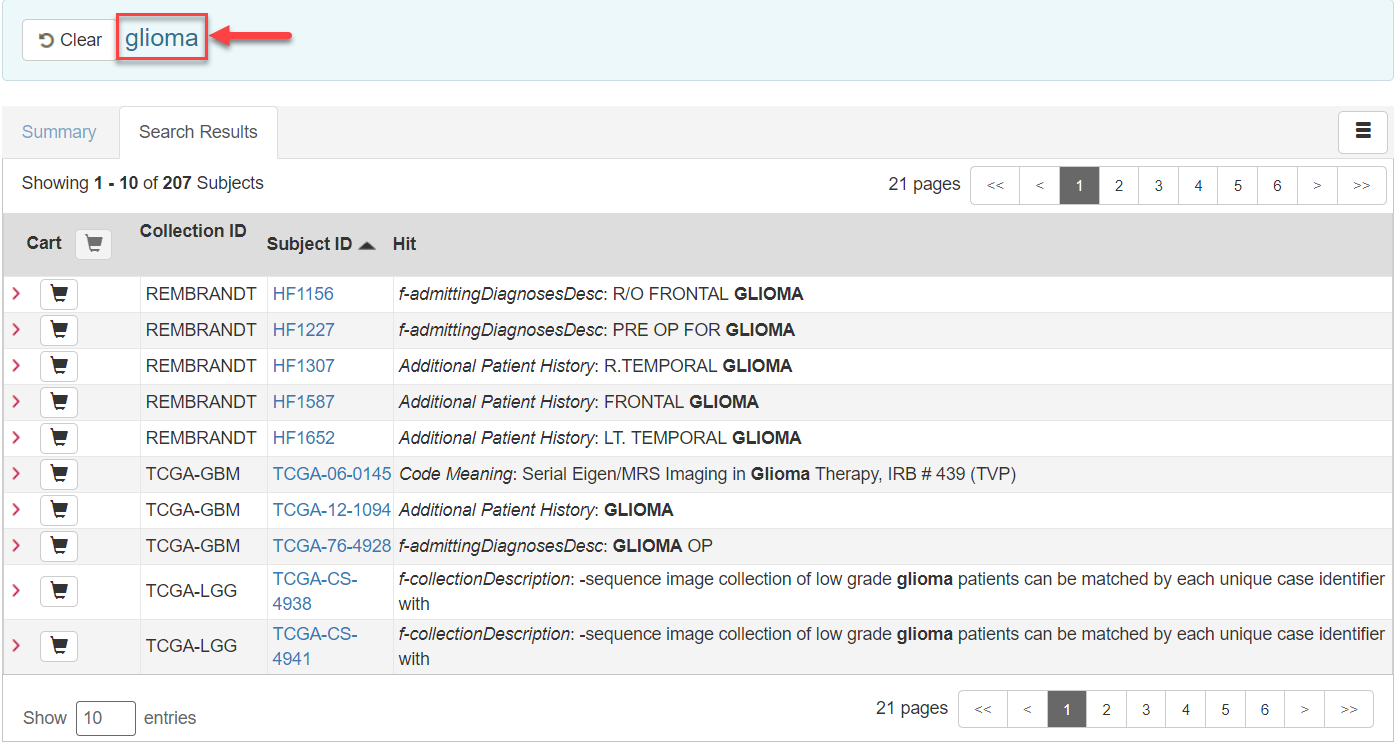A text search allows for searching of many of the database text fields, DICOM image tag data, and annotation files that are not available in the Simple and Advanced searches. A simple example of a text search is to find all subjects associated with the value pancreas by typing pancreas in the Text Search box. You can also use the field:searchTerm technique; for example, Body Part Examined:pancreas. In this example, the colon interprets the DICOM field from the value. Since text search also recognizes DICOM codes, you can also search on 0018,0015:pancreas, which is the DICOM code for Body Part Examined. Additionally, you can use a wildcard search such as Body Part Examined:panc* to find all subjects associated with values beginning with panc, including pancreas, pancreatic duct, and pancreatic duct and bile duct systems.
Text search does have some restrictions. These are:
- The text string you use must have more than one character. The search won't return any values if the text string has only one character.
- Do not use a forward slash (/) in your text string.
- Do not use complex searches with AND or OR statements (text search supports Lucene syntax but only a single field can be searched at a time).
To perform a text search
On the NBIA home page, click Text Search or Search Images > Text Search.
The Text Search page appears.- Select the number of search results per page you want the search to return.
- In the box at the top of the page, enter a text string of two characters or more.
Click .
The search results appear.
Navigation Tips
- Click the down arrow next to the Subject ID column header to sort the results alphabetically (A to Z or Z to A) by Subject ID.
- Click the arrows at the bottom of the table to display the first, previous, next, or last page of results.
- Click the page number links to move to a specific page of results.
- In the Show (10) entries box in the bottom left, edit the default 10 to the number of entries you want to see on a search results page.
The following table describes each item in the search results table.
| Search Result | Description |
|---|---|
| Collection ID | Collection identifier |
| Subject ID | Click the Subject ID to view all study images for this subject in a DICOM web viewer, a single series' thumbnails, or the DICOM header for the first image in the series. See Search Results (Studies for Subject). |
| Hit | The field in the study where the text string you entered as your search criteria appears. |
| Total Studies | Total number of studies for the subject |
| Total Series | Total number of image series for the subject |
Add the images for a single series or the entire study to your data basket. When you have marked a record for addition to the data basket, it is highlighted in yellow.
For more information, see Managing the Data Basket. |



